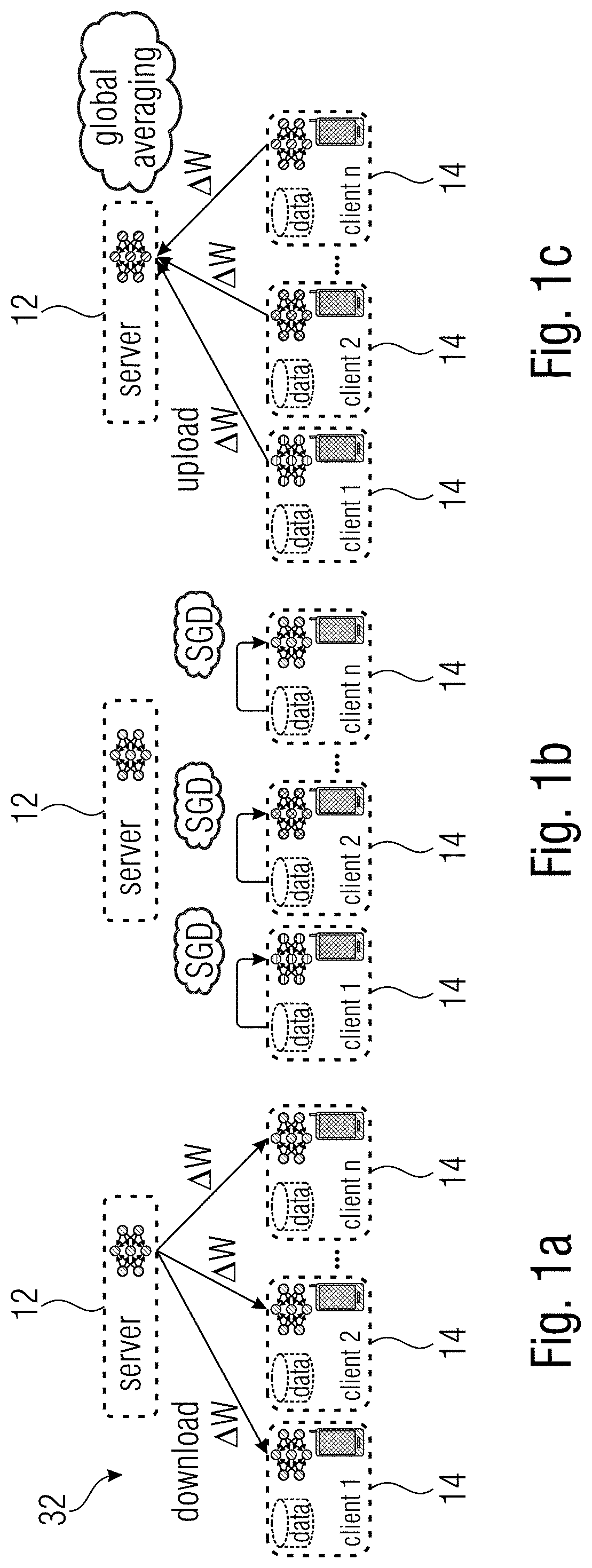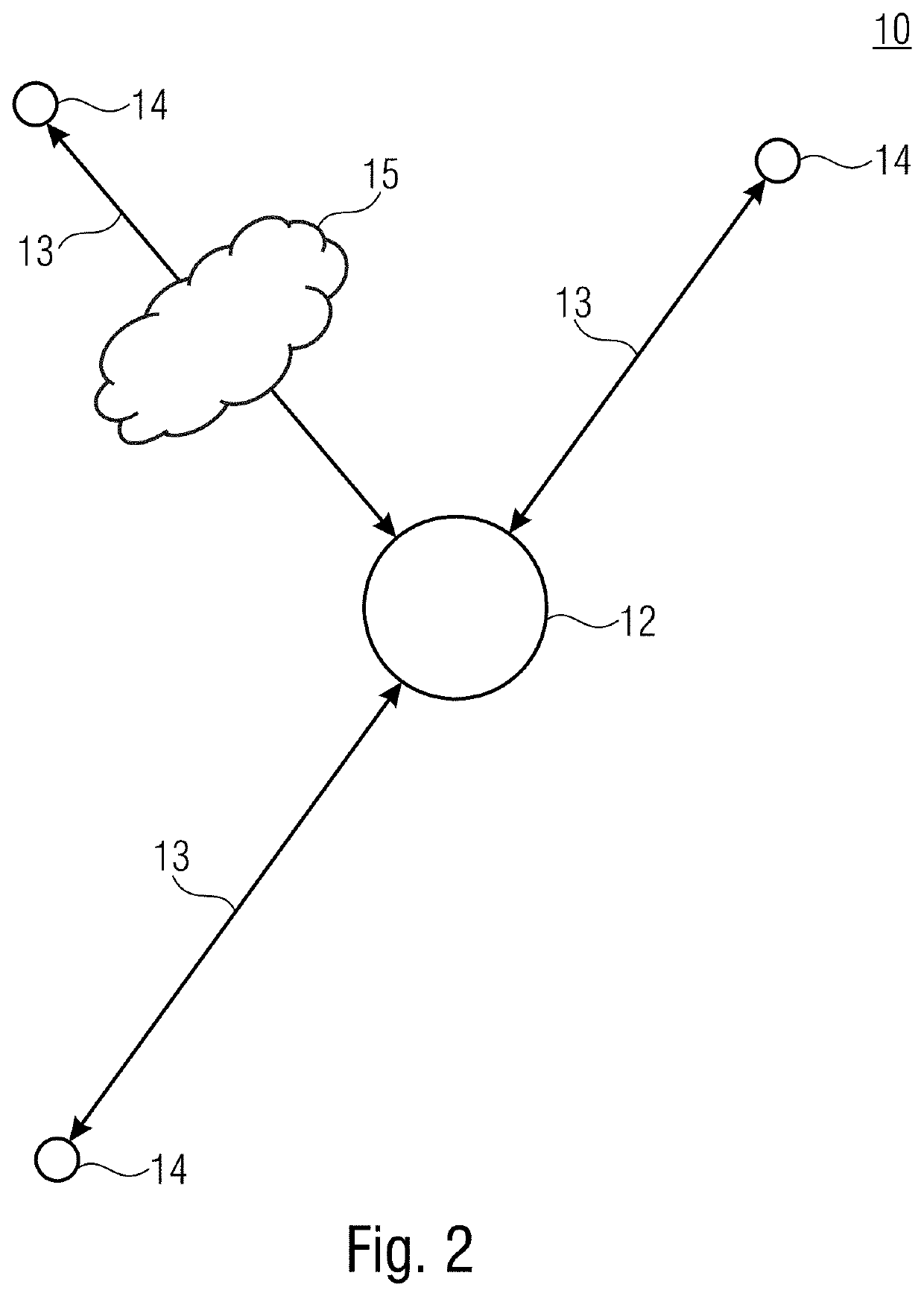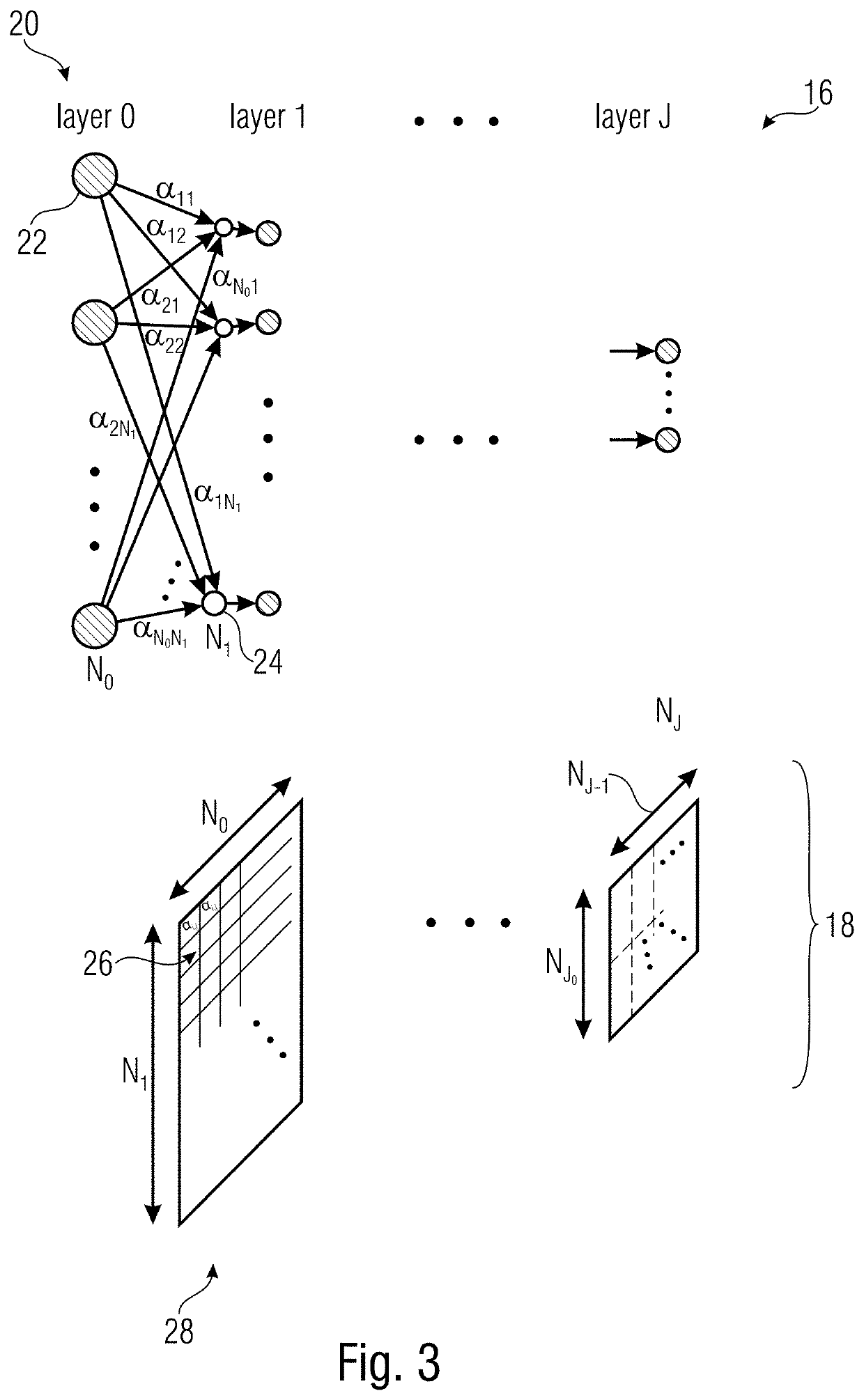Concepts for federated learning, client classification and training data similarity measurement
- Summary
- Abstract
- Description
- Claims
- Application Information
AI Technical Summary
Benefits of technology
Problems solved by technology
Method used
Image
Examples
experiment 1
[0138] Fashion-MNIST with rotated labels: Fashion-MNIST contains 60000 28×28 grey-scale images of fashion items in 10 different categories. For the experiment we assign 500 random data-points to 100 different clients each. Afterwards we create 5 random permutations of the labels. Every Client permutes the labels of his local data using one of these five permutations. Consequently, the clients afterwards form 5 different groups with consistent labeling. This experiment models divergent label distributions pi(y|x). We train using Federated Learning, CFL as well as fully locally and report the accuracy and loss on the validation data for progressing communication rounds in FIG. 16a. As we can see CFL distinctively outperforms both local training and Federated Learning. Federated Learning performs very poorly in this situation as it is not able to fit the five contradicting distributions at the same time. Local training performs poorly, as the clients only have 500 data-points each and ...
experiment 2
[0139] Classification on CIFAR-100: The CIFAR-100 dataset [8] consists of 50000 training and 10000 test images organized in a balanced way into 20 super classes (‘fish’, ‘flowers’, ‘people’, . . . ) which we try to predict. Every instance of each super class also belongs to one of 5 sub classes (‘fish’→‘ray, shark’, ‘trout’, . . . ). We split the training data into 5 subsets, where the i-th subset contains all instances of the i-th sub class for every super class. We then randomly split each of these five subsets into 20 evenly sized shards and assign each of the resulting 100 shards to one client. As a result, the clients again form 5 different clusters, but now they vary based on what types of instances of every super class they hold. This experiment models divergent data distributions pi(x). We train a modern mobile-net v2 with batch-norm and momentum. FIG. 16b shows the resulting cosine similarity matrix and training curves for Federated Learning, local training and CFL. As we c...
experiment 3
[0140] Language Modeling on AG-News: The AG-News corpus is a collection of 120000 news articles belonging to one of the four topics ‘World’, ‘Sports’, ‘Business’ and ‘Sci / Tech’. We split the corpus into 20 different sub-corpora of the same size, with every sub-corpus containing only articles from one topic and assign every corpus to one client. Consequently, the clients form four different clusters depending on what type of articles they hold. This experiment models text data and divergent joint distributions pi(x,y). Every Client trains a two-layer LSTM network to predict the next word on its local corpus of articles. Again, we compare CFL, Federated Learning and local training and observe in FIG. 16c that CFL finds the correct clusters and outperforms the two other methods.
PUM
 Login to View More
Login to View More Abstract
Description
Claims
Application Information
 Login to View More
Login to View More - R&D
- Intellectual Property
- Life Sciences
- Materials
- Tech Scout
- Unparalleled Data Quality
- Higher Quality Content
- 60% Fewer Hallucinations
Browse by: Latest US Patents, China's latest patents, Technical Efficacy Thesaurus, Application Domain, Technology Topic, Popular Technical Reports.
© 2025 PatSnap. All rights reserved.Legal|Privacy policy|Modern Slavery Act Transparency Statement|Sitemap|About US| Contact US: help@patsnap.com



